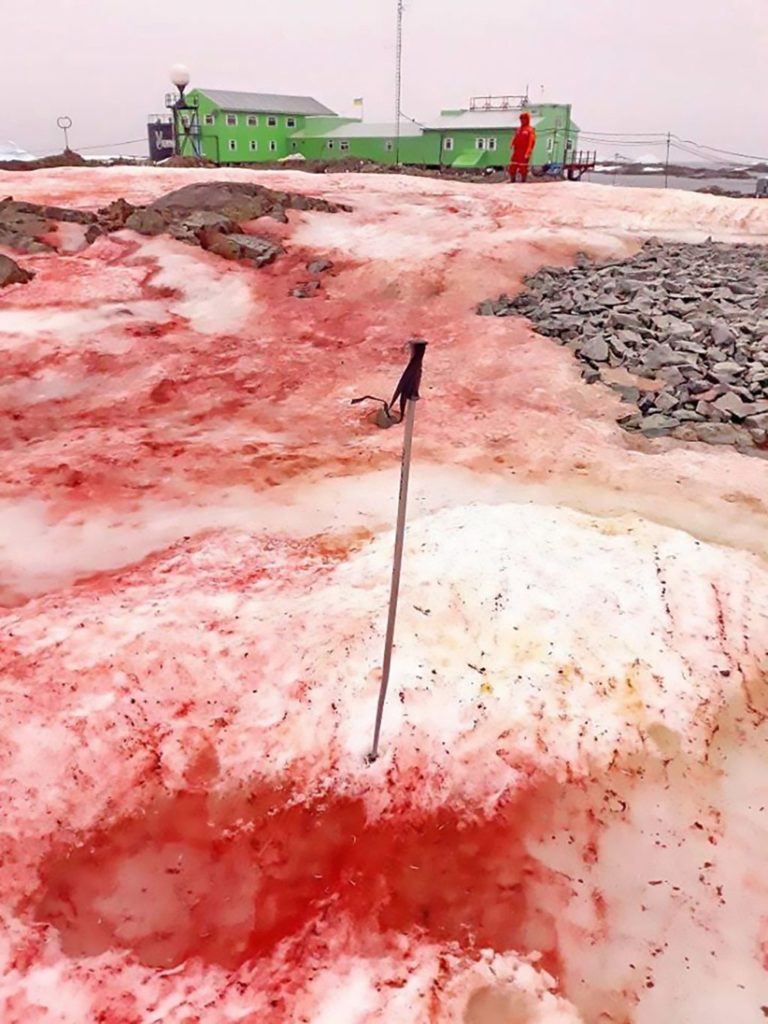Focus: GS-III Environment and Ecology
Why in news?
Snow around Ukraine’s Vernadsky Research Base, located off the coast of Antarctica’s northernmost peninsula, has started to take on a red tinge, courtesy of an algae that thrives in freezing weather. Because of the red tinge, the snow is often dubbed “watermelon snow”.

Why is the snow turning red?
- Algae found around the Ukrainian research base grow well in freezing temperatures and liquid water.
- During the summer, when these typically green algae get a lot of sun, they start producing a natural sunscreen that paints the snow in shades of pink and red.
- In the winter months, they lie dormant.
- The algae produce the tinted sunscreen to keep themselves warm.
- The report mentions that because the snow becomes darker from the tinge, it absorbs more heat, as a result of which it melts faster.
- Further, these algae, that are not uncommon in other polar settings around the world, change the snow’s albedo, which refers to the amount of light or radiation the snow surface is able to reflect back.
Extra information
The Greek philosopher Aristotle is believed to be one of the first to give a written account of watermelon snow over 2,000 years ago.




